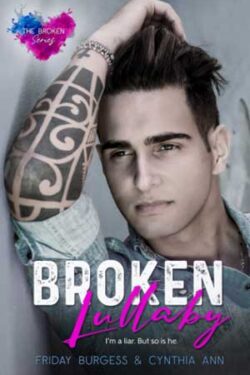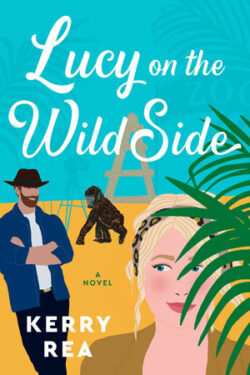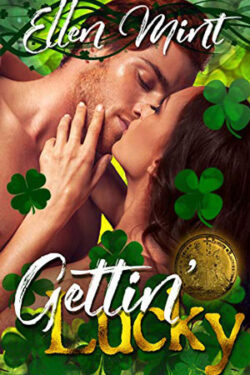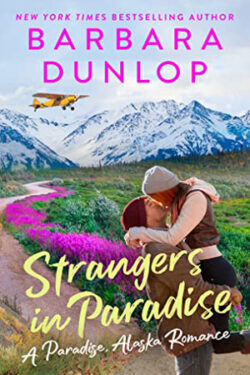Cheryl St. John: An Interview & Want Ad Wedding

Some Q&A time with Cheryl St. John!
How did you first get started writing romance?
The first story I ever wrote was called The Pink Dress. I stapled the pages into a book and drew a cover. I don’t remember how old I was. Maybe eleven. Many years later, I wrote a short story, submitted it, and received a rejection from Redbook Magazine. I was fourteen and I still have the story and the rejection slip. I still remember the feeling of rejection and disappointment when I received it. My first complete novel was titled The Rebel. I’m actually too embarrassed to tell you what it was about. I was sixteen.
I wrote in notebooks for years while my children were growing up, and I started a couple of books that way. I never got serious until my youngest daughter went to first grade. I was lost without her, but instead of having another baby, going to school or getting a real job, like many women with empty nest syndrome, I decided that was the time to write the book I’d always wanted to write.
All The Tender Tomorrows. Great title, eh? Ambitious undertaking. Great characters. No plot. Passive, passive, passive writing. A totally unsellable time period. I typed it on an old manual Smith-Corona, with an “A” that struck half a line below all the other letters, and the manuscript underwent at least three or four complete rewrites.
I didn’t know it was passively written. I didn’t know it was a time period no one would buy. I thought it had a great plot—I was involved. lol I sent it to many, many publishers—most major publishers, in fact. What they should have said in their rejection letters was: “This doesn’t fit our present needs, and if it ever does, we’ll shoot ourselves.” But they didn’t.
However, I did not receive constructive rejections; I got vague form rejections. But I did learn to persevere. I wrote the whole thing from beginning to end and rewrote it as many times and as many ways as I knew how. And if one of those publishers had told me how to change it to make it better, I’d have done that, too.
Soft Summer Magic came next, a contemporary. Spoiled rich girl gets her comeuppance when her father’s Midwest bank goes broke and she has to work as a nanny for the guy who maintained her pool—and she learns he is the owner of the company. A slim bit of conflict. A lot of romance and some scenes I still remember…not terrible. Would it sell today? Perhaps rewritten. Will I? No.
Brotherly Love a.k.a. A Kindred Oath followed that. It was another contemporary. A young man’s dying brother makes him promise to take care of his widow after he’s gone. Some conflict. Some plot. Fair characters. Not redeemable. But I sent it out, too. Both of those were rejected by all the contemporary publishers.
Through All The Tears. This was an attempt at the inspirational market. (I also tried to sell articles and devotionals and all other kinds of projects in between these stories.) Dumb story. Dumb plot. Didn’t finish it. But it had some really well-written pages in it, so I was developing something. A voice perhaps.
The Birthright was a story I loved from its very conception. I fell in love with my research on this endeavor. The first draft had page after page after page of all the fascinating details I’d learned. I included nearly my whole notebook full of notes into the story.
Mind you, this was still before I ever found a writers’ organization. I was reading the outdated how-to books from the library and thinking I could do this. I worked on this story for a few years. After several rewrites—and buying a second-hand IBM Selectric typewriter, I had a good thing going. I really thought I was uptown with that electric beast. Baby, I had arrived. This book would be a best seller.
I mean this typewriter even had those nifty little eraser papers you held against the paper and re-typed over—no more globs of White Out all over the striker keys, or White Out plastered so thick on the page that it chipped off all over my desk. I did great—unless I took the page out of the carriage. It was not impossible to get it back just exactly the way I took it out so I could fix it, but there’s only so much time in a year, you know?
I submitted that manuscript to all the publishers. And they all rejected it. By that time I was the query letter queen. I knew just what to say to get editors to ask for my entire manuscript. Everyone asked to see it–no one wanted to buy it.
Around this time I found Romance Writers of America and a local chapter. And I started learning. All along I’d thought I was so prolific. I’d never had writer’s block. I just sat down at the keyboard and wrote and wrote and wrote. Words flew off my fingers onto the pages.
Well, then I learned about passive writing and studied Dwight Swain’s Techniques of the Selling Writer, and found out about motivation/reaction and feeling/action/speech and CONFLICT! And I learned why I’d blissfully written so easily for so long. Ignorance was bliss. I was writing crap. Fixing it was a monumental task.
At this point, since I’d learned so much and was now such an improved writer, I decided to start something new.
This Business of Love. (I’m still going to use this title someday.) Another contemporary attempt. I had joined a critique group by this time. Boy, was it hard learning how much work my writing really needed.
The historical characters wouldn’t leave me alone, so I went back to The Birthright. I rewrote it. And then I got very, very, very brave—and had it critiqued by the late Diane Wicker-Davis, an Avon author and member of our chapter at that time. A few weeks later, I got the critique; Diane went over her thoughts with me. In red ink she’d Xed out page after page and written “nothing happening” in the margins. I couldn’t look at it or go back to any writing for two solid months. But in my heart, I realized she knew what she was talking about. I was never going to have a better opportunity, so I rewrote it again, using her edits and suggestions. And I submitted it again–and had it rejected by an agent who actually gave me two pages of suggestions. I rewrote it again. And she rejected it again. I stuck it on a shelf.
My next project was Rain Shadow. By that time I was taking care of my first grandchild while my daughter worked, still raising two children at home, and working 40 plus hours a week at a “job” job. When I look back, I can’t imagine how I managed it all, but I did.
I wrote every available minute. When I was writing Rain Shadow, I was working some pretty crazy hours, but whenever I wasn’t at work, I was in front of my computer. My children took turns fixing supper, and they learned to leave me alone while I was working. My husband, who’d never turned on the washer in his life, learned to do laundry. I wasn’t always happy with the results, but hey, he did it. For nearly a year, I barely attended any family gatherings. My husband took the kids and left me home, undisturbed, to work.
The first editor I sent the manuscript to was one I’d met at a conference—I spent the entire morning before the appointment in the bathroom being sick. She asked to see the complete manuscript. For months, I waited on pins and needles. Then she rejected it. Being me, I had the manuscript out to other people and places, too, and soon an agent called to tell me she loved the story and she was sure she could sell it. Harlequin bought it four months later.
Then I learned about line edits and copy edits and cover art sheets, and after the dust settled, I went to the pile and thought, “Hmmm….” I pulled out The Birthright, which I had retitled Heaven Can Wait in one of the many rewrites, and mailed it to my editor, with a letter asking what I could do to get her to buy it. A few weeks later, she called with the answer. “Cut a hundred pages.” I did. She cut more. I finally saw that book in print, and both of those stories are still available as digital books.
I’ve come a long way since stapling pages and drawing my own covers, but I still enjoy the process of creating stories.
If you could travel to a top literary destination that you’ve never been to, where would you go?
Japan (Shogun)
Australia (Australia)
Pandora (Avatar)
And I’d love to be on set anywhere while a movie was being made. Behind the scenes is my thing.
Out of all the books you’ve read, which one would you turn into a book to film adaptation, (if it has not been done before)?
With this super power I would first turn all of my own books into movies.
As for a book I’ve not written, I would choose Twice Loved by LaVyrle Spencer.
List five adjectives to describe yourself.
optimistic
(discouraged) perfectionist
creative
tenacious
last-minute
What’s your favorite place for inspiration?
I may be old school in this respect, because I know a lot of authors write in coffee shops or on their decks in summer, but I’ve conditioned myself over many years to sit at my desk with a cup of coffee and create stories.
I brainstorm the stories differently, however. I gather a fresh binder, colored fine-point felt-tip pens, the character grids I use for plotting conflict, name books (and the cup of coffee) and spread out on the sofa, where I write down everything I know about the story, make a list of adjectives describing each character, decide the inciting incident that launches the story, change names until I find the ones that fit perfectly. Sometimes this takes a whole day, and from there I prepare the binder and go to my desk and write the synopsis.
It’s not a place that inspires me, but rather catching the excitement of the story in my head
What is your favorite quote by a writer who inspires you?
“One of the few things I know about writing is this: spend it all, shoot it, play it, lose it all, right away, every time. Do not hoard what seems good for a later place in the book, or for another book; give it, give it all, give it now. The impulse to save something good for a better place later is the signal to spend it now. Something more will arise for later, something better. These things fill from behind, from beneath, like well water.”
– Annie Dillard
What’s your favorite reading/book meme of all time?
Children are made readers on the laps of their parents
What are you working on next?
I just finished Mistletoe Reunion, a novella in the October 2016 anthology Cowboy Creek Christmas. Sherri Shackleford and I sweep readers back to 1868 Kansas and revisit the town and the characters from our trilogy with Karen Kirst. This was a fun project because Sherri and I got to write in our characters from Want Ad Wedding and Special Delivery Baby and bring new residents to town as well. Our stories happen simultaneously between late October and Christmas, so we coordinated all the details and enjoyed creating more stories set in Cowboy Creek.
Thanks for stopping by, Cheryl!

How to find Cheryl:
email Cheryl St.John at: SaintJohn@aol.com
Visit me on the web: http://www.cherylstjohn.net/
Read my blog, From the Heart: http://cherylstjohn.blogspot.com/
Like my Facebook author page: https://www.facebook.com/CherylStJ
Follow me on Twitter: https://twitter.com/_CherylStJohn_
I’m a Pinterest junkie! http://pinterest.com/cheryl_stjohn
Goodreads: https://www.goodreads.com/CherylStJohn






